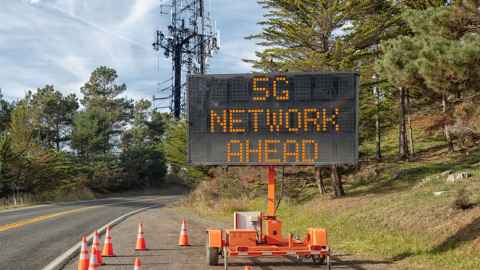Who should we trust about 5G?
11 October 2019
Opinion: As concerns arise about perceived health risks of 5G, Mark Elwood explains how we can decipher the conflicting messages coming out of extensive research.

New Zealand’s mobile networks will soon begin roll-out of 5G, which stands for fifth generation and is the latest development in the use of radio waves for communications.
There is not a lot of research specifically on 5G as it is too new, but there are concerns about health issues. Those opposed to 5G are mainly re-stating concerns about the possible negative health effects of radio frequency fields in general. This is an area that has been researched intensively, and there are thousands of studies available. Dr Andrew Wood and I explored many of these in a paper published recently in the New Zealand Medical Journal.
For instance, some studies show biological effects of radio frequency fields that could be related to increased diseases. If we only read those studies, we may conclude there is a serious problem. But then, there are many other studies using the same or better methods, which show no detrimental effects. Detailed reviews have shown that high-quality studies with more careful methods tend to show no effects, whereas results suggesting hazards more often come from low-quality studies, which are likely to be wrong. And then there are studies showing potentially beneficial effects, from which we could conclude that radiofrequencies are good for us.
What are radio frequencies?
Radio waves are linked electric and magnetic fields that travel away from their source (an antenna) as waves, like the ripples spreading out when a pebble is dropped into a pond of water. A more precise analogy would be as though a steady stream of stones were being dropped into the pond. Like the waves on a pond, these waves can be characterised by their wavelength (distance between the wave crests) or their frequency (how many wave crests pass a particular point every second). The frequencies of radio waves are far greater than the ripples on a pond, however; FM radio stations use frequencies of 100 million cycles per second. Cellular technologies use frequencies around one billion cycles per second, usually referred to as “1 gigahertz” or “1 GHz” for short.
Radio waves carry energy away from their source, and so are considered to be a form of ‘radiation’. Many people only think of radiation as X-rays, gamma rays and other radiation from nuclear power stations and, of course, atomic bombs, and therefore as something to be feared and controlled strictly. But the word ‘radiation’ can be applied to anything that transports energy away from its source. This includes light from the sun or a light bulb. The effects of a particular kind of radiation on the human body depend on the physical nature of that radiation, and it is a mistake to think all radiation has the same effects.
The main difference between 5G and current mobile technologies is that much larger blocks of radio frequencies will be used to transmit data - like using a larger pipe to carry higher volumes of water. This means it is much faster to download large files like movies; information can be received and transmitted much more quickly (which is very important in controlling machines like driverless cars), and systems can be used by more people simultaneously.
The initial plan for the 5G roll-out is that it will use frequencies similar to those used by current mobile phones. In the future, higher frequencies around 26 GHz will become available, enabling even faster data transfer.
These frequency bands have been used for communications and radar for over 60 years. There are several studies in which the health of military radar operators has been assessed over many years after their radar work, and no ill effects have been seen. The higher frequencies will not be used everywhere – they are more suited to areas where there is a high density of users.
So how do we know which studies are reliable?
How do we decipher the conflicting messages from all this research and thousands of studies? There will always be new research and a lot of questions, so we need to rely on objective assessments of a balanced review of the relevant evidence. Opinions based only on selected studies may be misleading.
Thorough and objective reviews have been done by international scientific experts from many disciplines in several countries, including the European Union, Sweden, the Netherlands, Australia, and international organisations such as the World Health Organisation. Overall, there is no firm or consistent evidence of a health hazard to humans from the radio wave exposures from radio and television transmitters, cell phones, cell phone base stations, and so on, experienced by the general population.
These reports are freely available online. We have a group here, supported by the Ministry of Health, which has summarised these reviews and applied them to the New Zealand situation. Recent material can be found here.
Professor Mark Elwood is a Professor of Cancer Epidemiology at the Faculty of Medical and Health Sciences.
This article reflects the opinion of the author and not necessarily the views of the University of Auckland.
Used with permission from Newsroom: Who should we trust about 5G?, 11 October 2019.
Media queries
Alison Sims | Research Communications Editor
DDI: 09 923 4953
Mob: 021 249 0089
Email: alison.sims@auckland.ac.nz